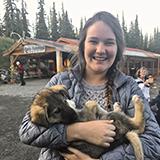If you suspect your dog may have eaten rat poison, take them to the closest emergency veterinarian right away. Rat poison is highly...
How to Clicker Train Your Dog
A clicker is a great tool to have for training your dog! Whether you just got a new puppy, or want to teach your old dog some new tricks, a clicker is an excellent way to mark good behavior. Here are some of the basics to get started:
- Clicker training uses positive reinforcement to teach dogs tricks and behaviors.
- The clicker marks the exact behavior you want your dog to perform.
- The click must be followed by a reward for positive reinforcement.

How Clicker Training Works for Dogs
A clicker is a small device that makes a distinctive “click” noise when pressed with your finger. When your dog does what you ask them to, you can press the clicker and give them their favorite treat.
This mechanism uses positive reinforcement by marking the exact moment your dog does what you are asking them to do. They will quickly learn that good behavior results in a click and a yummy treaty, encouraging them to repeat this behavior.
The clicker makes training more efficient and effective by communicating with your dog the exact moment when they’ve done something right for an instant reward.
Don’t have a clicker? No problem! You could also click your tongue or use a short word like “nice,” or “yes,” to mark the behavior. The benefit of the clicker is that it is a very distinctive sound your dog will only hear during their training sessions.
What Rewards to Use for Clicker Training
If your dog is very food motivated, then a yummy treat is a great reward to use for positive reinforcement clicker training. Determining the optimal reward is the first step in learning how to clicker train a puppy. The key is finding their “jackpot” treat—the treat they go absolutely crazy for. This will motivate them to quickly understand what you are asking them to do so that they can hear a click and get a yummy treat.
Doing your training sessions right before mealtime can help because that is when your dog is hungry and eager to get some snacks. Whichever reward you choose, try to keep it designated for training sessions to avoid losing your dog’s attention.
If your dog isn’t so interested in treats, some other options are a few seconds with their favorite toy every time you click. Another option is positive praise and petting for a few seconds when your dog does what you ask them.
How to Start Clicker Training Your Dog
The first step when learning how to clicker train a puppy is to “charge” the clicker. This means teaching your dog that a click results in a reward. The click sound won’t have any meaning to your dog until they associate it with a reward. Follow these steps to charge the clicker:
Once you notice your dog looking at the hand or bag with the treats when they hear the click, it means they are learning that “click” means treat. Now that your clicker is charged you’re ready to start!
Easy Tricks to Teach Your Dog Using a Clicker
Teach Your Dog to Shake Hands:
Teach Your Dog to Roll Over:
Teach Your Dog to Spin:
More Ways to Use Clicker Training for Dogs
Clicker training can be super useful when training your dog to come on a road trip with you. You can also teach commands like “place” to have your dog wait in a designated spot (like a cozy bed or crate) when you leave for work. Check out how to choose the right crate size for your dog.
This helps with reducing separation anxiety by rewarding your dog when you leave the home. You can also install a high-quality pet door to keep your dog occupied while you’re away.
When Can You Stop Using the Clicker
You can use the clicker every time you ask your dog to perform a command if you like. However, if you prefer not to have the clicker on hand then you can use it as a tool to teach them tricks, then stop using it once they’ve successfully learned a new trick.
When your dog reliably performs the command with the associated verbal cue in a variety of locations (distractions and all), then you can ditch the clicker until it’s time to teach them a new trick!
Spending time outdoors teaching your dog these cool new tricks? Check out 5 treatments for alleviating your dog’s seasonal allergies.
